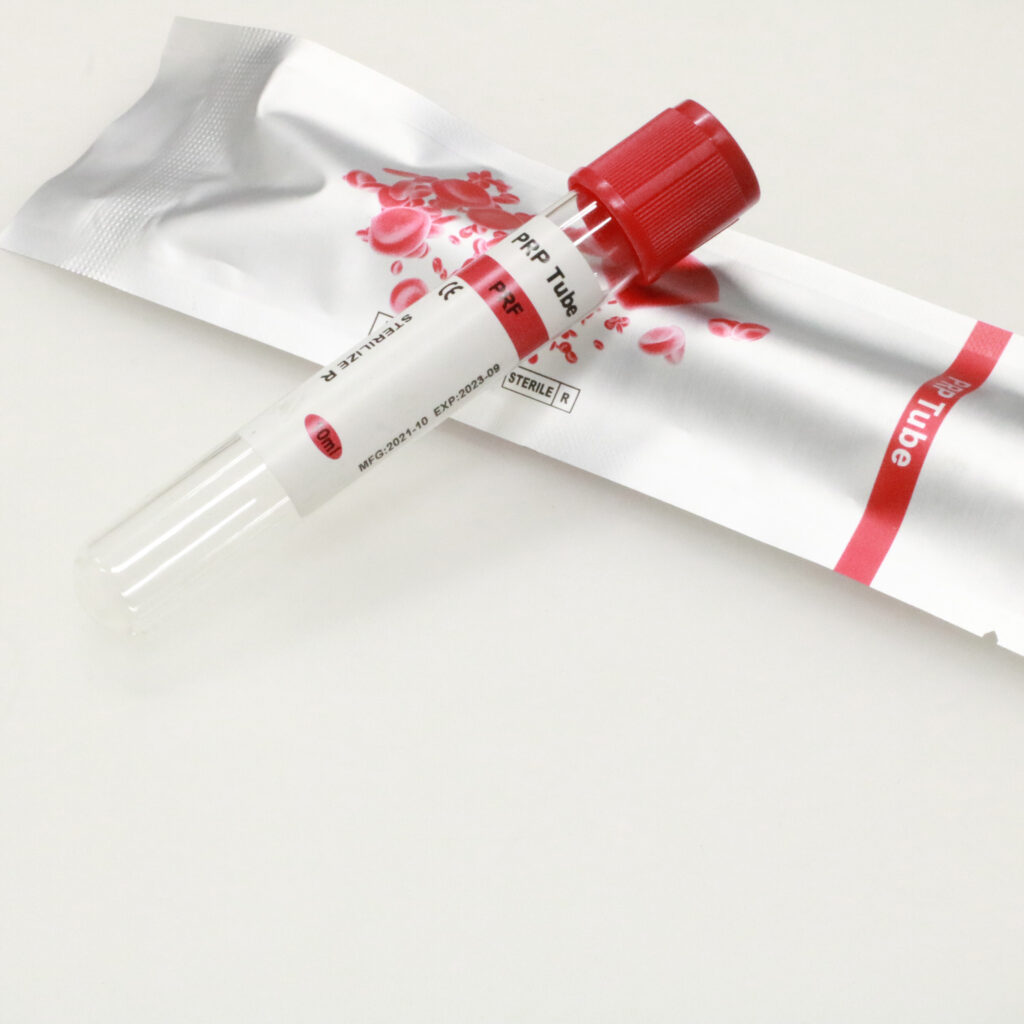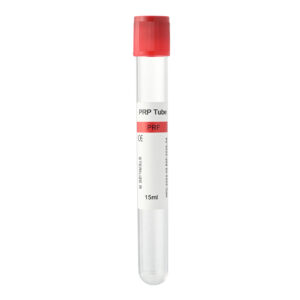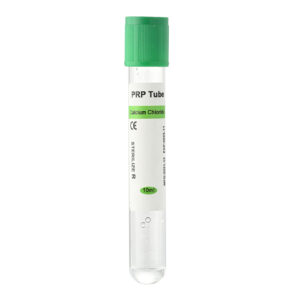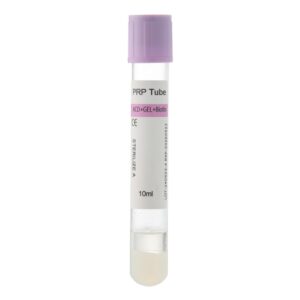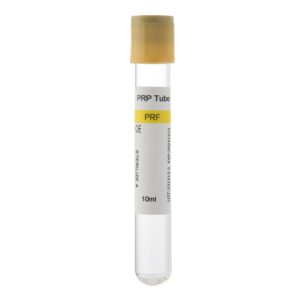PRP vs PRF: What’s the difference between the two? In recent years, Platelet-Rich Plasma and Platelet-Rich Fibrin have gained increasing attention in medical aesthetics. Both treatments are widely used for skin regeneration, wound healing, and anti-aging but differ in mechanisms, advantages, and suitable applications.
What is PRP?
PRP, or Platelet-Rich Plasma, is a concentrated plasma obtained from the patient’s blood. Medical professionals draw the patient’s blood and use centrifugation to separate it into layers, extracting plasma rich in platelets and growth factors. The primary function of PRP is to promote tissue repair and regeneration by injecting it into targeted areas. The growth factors in the platelets stimulate collagen production, improve skin texture, and reduce wrinkles and scars. PRP is also widely used in joint treatments and hair restoration.
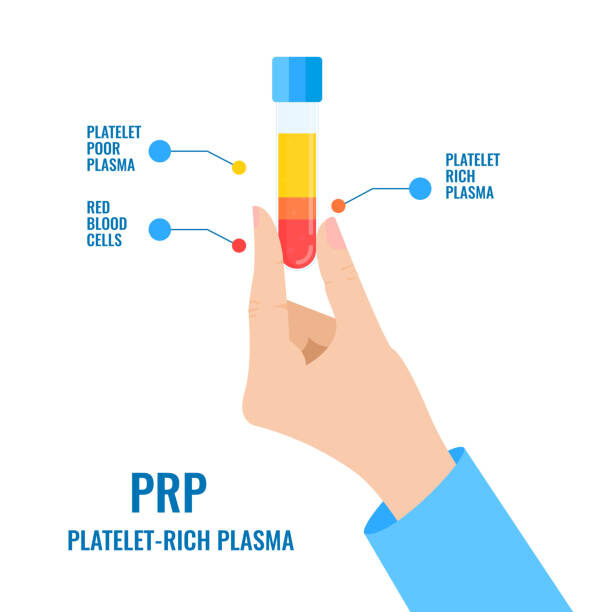
What is PRF?
PRF, or Platelet-Rich Fibrin, is another form of natural coagulated plasma extracted from the patient’s blood. Unlike PRP, PRF does not use anticoagulants during processing, allowing the blood to naturally clot and form a fibrin-rich gel containing white blood cells. This natural coagulation process results in a higher concentration of fibrin and white blood cells, which release growth factors for longer, promoting wound healing and tissue regeneration. Medical professionals commonly use PRF in cosmetic and dental fields, particularly for skin tightening, wrinkle reduction, and wound healing.
Advantages of PRP and PRF
PRP:
- Effective Tissue Repair: PRP accelerates cell proliferation and tissue regeneration, making it ideal for skin rejuvenation, wound healing, and arthritis treatment.
- Non-Invasive: As PRP uses the patient’s blood, it eliminates the need for external substances, reducing the risk of allergic reactions and rejection.
- Wide Applicability: PRP is versatile and applicable in dermatology, sports medicine, hair restoration, and other fields, with noticeable results.
PRF:
- Sustained Growth Factor Release: The fibrin matrix in PRF releases growth factors gradually, which is advantageous for long-term tissue repair, such as skin tightening and wound healing.
- Natural Process: Without anticoagulants, PRF retains natural blood components, minimizing side effects and offering a more natural treatment option.
- Enhanced Growth Factor Release: Research indicates PRF may have a stronger growth factor release than PRP, potentially leading to more effective tissue regeneration.
Differences Between PRP and PRF
The main differences between PRP and PRF lie in their processing and composition. PRP uses anticoagulants to prevent blood clotting, resulting in plasma with a high concentration of platelets and growth factors. This allows for rapid extraction and injection of growth factors, providing quick repair, which is beneficial for treatments requiring immediate results like skin aesthetics, arthritis, and hair restoration.
In contrast, PRF does not use anticoagulants, allowing blood to clot naturally. This process preserves more natural components, such as fibrin and white blood cells, which release growth factors over an extended period, promoting long-term tissue repair. PRF’s natural clotting process creates a supportive fibrin network in the treatment area, enhancing tissue regeneration and healing. This makes PRF particularly suitable for treatments requiring sustained results like skin tightening and wound healing.
Pre- and Post-Treatment Considerations
When choosing between PRP and PRF, understanding pre- and post-treatment considerations is crucial for ensuring effectiveness and safety.
Pre-Treatment Considerations:
- Health Assessment: Conduct a thorough blood test to confirm good health, particularly to rule out blood disorders or other conditions that might affect treatment outcomes.
- Avoid Anticoagulants: For PRP, avoid anticoagulant medications like aspirin and ibuprofen one week before treatment, as they can interfere with blood clotting and affect the results.
- Avoid Makeup: On the day before treatment, especially for PRF, avoid wearing makeup to ensure a clean treatment area and reduce infection risks.
- Consult Your Doctor: Discuss your health status and treatment goals with your doctor to understand the treatment process, expected outcomes, and potential risks, ensuring the best choice for your needs.
Post-Treatment Considerations:
- Avoid Intense Exercise: Refrain from strenuous activities for 24 hours post-treatment to minimize stimulation of the treatment area and prevent bleeding or swelling.
- Maintain Cleanliness: Keep the treatment area clean and follow the doctor’s instructions to prevent infection. Use recommended skincare products to support healing and maintain skin health.
- Avoid Friction: Especially after PRF, avoid rubbing or pressing the treatment area to reduce irritation and promote faster healing.
- Follow Doctor’s Advice: Adhere strictly to post-treatment care instructions, including using recommended skin care products and avoiding specific activities to ensure optimal results and minimize side effects, such as sun exposure or irritating cosmetics.
Which is Better?
Both PRP and PRF offer unique advantages, and the choice between them depends on individual needs and treatment goals. If you need rapid repair and regeneration, especially for skin aesthetics, joint treatment, or hair restoration, PRP may be more suitable due to its quick and noticeable effects. However, if you prefer long-term results and a natural treatment process, PRF might be the better option. Its sustained release of growth factors is particularly beneficial for long-term treatments like skin tightening and wound healing. Ultimately, the decision should be based on personal health conditions and treatment needs, ideally with professional medical consultation to determine the most appropriate option.
Conclusion
PRP and PRF are proven, safe, and effective treatment methods, each offering distinct advantages and applications. Understanding their differences and benefits can help make a more informed decision in medical aesthetics or health treatments.

